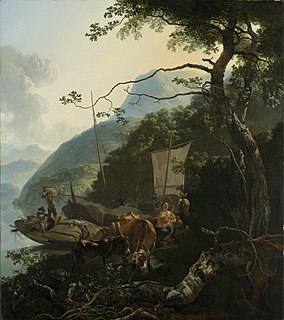
RMIT University, officially the Royal Melbourne Institute of Technology (RMIT), is a public research university in Melbourne, Australia.
David Chesworth is an Australian-based interdisciplinary artist and composer. Known for his experimental and at times minimalist music, he has worked solo, in post-punk groups, electronic music, contemporary ensembles and experimental performance. Together with Sonia Leber, Chesworth has created a series of large scale installation and video artworks, such as Zaum Tractor included in the 56th Venice Biennale (2015) and This Is Before We Disappear From View commissioned by Sydney Biennale (2014).

Dr Norman Kingwell Day is an architect, educator, and writer.

Zoja Trofimiuk is an Australian sculptor and printmaker, born in Prague, Czechoslovakia. She specializes in cast glass; her studio is in Melbourne.
John Wardle is a Melbourne-based architect. He graduated from the Royal Melbourne Institute of Technology with a degree in Architecture.

Sam Leach is an Australian contemporary artist. He was born in Adelaide, South Australia. Leach worked for many years in the Australian Tax Office after completion of a degree in Economics. He also completed a Diploma of Art, Bachelor of Fine Art degree and a Master of Fine Art degree at RMIT in Melbourne, Victoria. Leach currently resides in Melbourne. Leach's work has been exhibited in several museum shows including "Optimism" at the Queensland Art Gallery and "Neo Goth" at the University of Queensland Art Museum in 2008, in 2009 "the Shilo Project" at the Ian Potter Museum of Art and "Horror Come Darkness" at the Macquarie University Art Gallery and "Still" at Hawkesbury Regional Gallery in 2010. His work is held in public collections of regional galleries of Geelong, Gold Coast, Coffs Harbour, Newcastle and Gippsland and the collections of La Trobe University and the University of Queensland.

RMIT Gallery is an Australian public art gallery located in Melbourne, Victoria. It is the main art gallery of the Royal Melbourne Institute of Technology (RMIT).

Lenton Parr was an Australian sculptor and teacher.
The RMIT School of Art is an Australian university art school located in Melbourne, Victoria, which is responsible for undergraduate and postgraduate education and research in fine art and photography at RMIT University. Established in 1917, it is the top art school in Australia and 11th in the world, according to the 2020 QS World University Rankings.
John Gollings AM, is an Australian architectural photographer working in the Asia Pacific region.
Searle X Waldron is an Australian architecture firm based in St Kilda, Melbourne. It is an emerging firm co-founded by Nick Searle and Suzannah Waldron in 2007. The firm focuses on projects ranging from small scale residential to larger scale urban master-planning. Some of their notable projects and design competitions include the MoCAPE and Art Gallery of Ballarat Annexe which have managed to attain various awards from the Australian Institute of Architects, including the 2012 Colorbond Award for Steel Architecture and 2012 Architecture Award for Public Architecture Alteration & Additions. Their designs have been exhibited across Australia and throughout Asia and Europe.

Natasha Johns-Messenger is an Australian conceptual artist and filmmaker, who has lived and worked in New York since winning the Green Card lottery in 2005. Johns-Messenger is best known for her large-scale site-determined installations that examine spatial perception and light. Her work is a complex process of imitation, illusion and trickery, often activated by architectural interventions and optical physics.
Harriet Edquist is an Australian curator, and Professor of Architectural History in the School of Architecture and Design at RMIT University in Melbourne. Born and educated in Melbourne, she has both published widely on and created numerous exhibitions in the field of Australian architecture, art and design history. She also contributes to the production of Australian architectural knowledge as editor of the RMIT Design Archives Journal and is a member of the Design Research Institute at RMIT University.
Robert Owen is an Australian artist and curator. He lives and works in Melbourne, Australia.

Lindsay M. Edward (1919–2007) was an Australian abstract artist, mosaicist and teacher. He was born in Victoria on 26 August 1919.
Kate Just is an American-born Australian artist.

Emily Floyd is an Australian artist working in public art, sculpture and print making. Her family were toy makers in traditional European styles — carefully crafted of wood. She learned the skills and use of machinery, which are reflected and used in many of her sculptural works. She has been commissioned to produce multiple public art sculptures in Melbourne and Sydney, Australia.
Benjamin Howe is a contemporary Australian artist is known primarily for his figurative and experimental oil painting. He holds a Masters of fine art degree with distinction from RMIT University.
Sanné Mestrom is an Australian experimental and conceptual artist who works mainly in the mediums of installation and sculpture. Mestrom has a research-based practice and incorporates notions of "play" into social aspects of urban design. Since 2011, Mestrom has remade and reinterpreted motifs from the twentieth century modernist art canon. She has earned many grants and has been commissioned to execute public art, sculptures in situ. She has studied in Korea and Mexico, and is a senior lecturer at Sydney College of Art.
Mari Funaki was a leading contemporary jeweller, designer, metal-smith and sculptor. She was active from 1990 to 2010. Initially a jeweller, she moved towards "purely sculptural forms" from the late 1990s.











